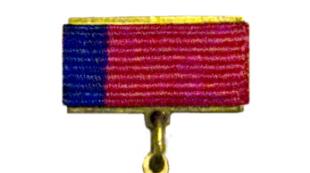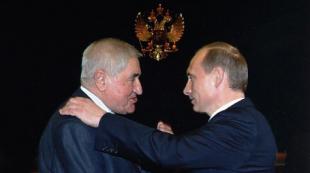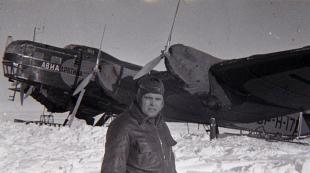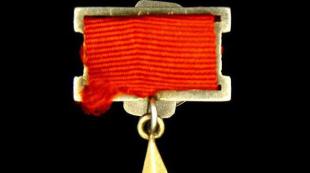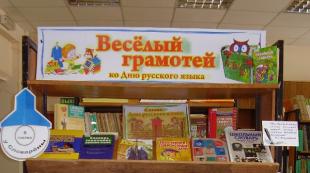Domestic and foreign policy of Nicholas 1 presentation. Presentation for the lesson: Domestic policy of Nicholas I. presentation for a history lesson (grade 8) on the topic. Aggravation of Russian-English contradictions
Dynastic crisis of 1825. In 1820, Emperor Alexander I informed his brother Nikolai Pavlovich and his wife that the heir to the throne, their brother Grand Duke Konstantin Pavlovich, intended to renounce his right, so Nikolai would become the heir as the next brother in seniority. In 1823, Konstantin formally renounced his rights to the throne, as he had no children, was divorced and married a second marriage to the Polish Countess Grudzinskaya. On August 16, 1823, Alexander I signed a secretly drawn up manifesto, which approved the abdication of Konstantin Pavlovich and approved Nikolai Pavlovich as the heir to the throne. On December 12, 1825, unable to convince Konstantin to take the throne and having received his final refusal (albeit without a formal act of renunciation), Grand Duke Nikolai Pavlovich decided to accept the throne in accordance with the will of Alexander I.
Investigation and trial of the Decembrists: 579 people were involved in the investigation and trial. The process took place in the strictest secrecy, the work of the commission of inquiry was headed by the emperor himself. On July 13, 1826, five participants in the uprising: Pestel, Muraviev-Apostol, Bestuzhev-Ryumin, Kakhovsky and Ryleev were executed in the Peter and Paul Fortress, more than a hundred people were exiled to hard labor and eternal settlement in Siberia.
Strengthening measures government controlled: In 1826 M.M. Speransky was instructed to carry out the codification of Russian legislation. He managed to do this within 5 years: in 1832 the "Complete collection of laws of the Russian Empire" was published in 45 volumes, and in 1833 - the Code of current laws. The government took a number of measures to support the nobility, which led to an increase in the authority and role of the nobility in Russia.
Peasant question: In 1837-1841, P.D. Kiselev carried out a reform of the state peasants, introducing peasant self-government. In 1842, a decree “On obligated peasants” was issued, according to which the landowner could release his peasants with the provision of allotments for hereditary use, but with the performance of certain duties. In 1847-1848, the peasants received the right to redeem themselves for freedom and acquire uninhabited lands and buildings. The landlords were forbidden to exile peasants to Siberia and sell them without land.
Financial Reform. Practical activity of E.F. Cancrina, extremely versatile. The ordering of the Russian monetary system, increased protectionism and improved government reporting and bookkeeping. The monetary reform of 1839-1843 consisted in the fact that banknotes, first issued in Russia under Catherine II, were fixed in the silver unit that existed since 1810 (3 rubles 50 kopecks in banknotes = 1 silver ruble). From June 1, 1843, banknotes and other paper signs began to be exchanged for "state credit notes", which, in turn, were exchangeable for hard cash. The whole reform was carried out with great care and gradualness.
Policy in the field of education and culture: It was forbidden to accept serfs in the middle and higher educational establishments However, it was under Nicholas I in 1828 that the main pedagogical institute was reopened in St. Petersburg. A number of higher technical and special schools were founded: in 1828 Institute of Technology in St. Petersburg, in 1832 the School of Civil Engineers, in 1835 the School of Law, in 1840 the Gory-Goretsk Agricultural School, in 1844 the Konstantinovsky Land Survey Institute in Moscow, in 1830 the veterinary school in Kharkov, in 1848 - in Dorpat. There were facts showing the personal participation of Nicholas I in the development of the arts: In September 1826, Nicholas accepted Pushkin, who had been released by him from Mikhailovsky exile, and saved the poet from general censorship (he decided to censor his writings himself), support from the Alexandrinsky Theater. Nicholas I had both literary taste and civic courage to defend The Inspector General and, after the first performance, say: “Everyone got it - and most of all to ME.” However, it was Nikolai who ordered Lermontov to be exiled to the Caucasus. By order of the tsar, the magazines European, Moscow Telegraph, Telescope were closed, P. Chaadaev was persecuted, and F. Schiller was banned from staging in Russia.
Contemporaries about Nicholas I: “Deeply sincere in his convictions, often heroic and great in his devotion to the cause in which he saw the mission entrusted to him by providence, it can be said that Nicholas I was a donquixote of autocracy, a terrible and malicious donquixote, because possessed an omnipotence that allowed him to subordinate everything to his fanatical and outdated theory and trample underfoot the most legitimate aspirations and rights of his age. That is why this man, who combined with the soul of a generous and chivalrous character of rare nobility and honesty, a warm and tender heart and an exalted and enlightened mind, although devoid of latitude, that is why this man could be a tyrant and despot for Russia during his 30-year reign who systematically stifled every manifestation of initiative and life in the country he ruled. - A.F. Tyutcheva. “He has a lot of ensign and a little Peter the Great,” Pushkin wrote about Nikolai in his diary on May 21, 1834; “His mind is not processed, his upbringing was careless,” Queen Victoria wrote about Emperor Nikolai Pavlovich in 1844.
The work can be used for lessons and reports on the subject "General topics"
Numerous presentations and reports on common topics help you find interesting material gain new knowledge and answer a variety of questions
To use the preview of presentations, create a Google account (account) and sign in: https://accounts.google.com
Slides captions:
1. Rebellion of the Decembrists. 2. Domestic politics Nicholas. 3. Foreign policy of Nicholas. Reign of Nicholas I
"Union of Salvation": Alexey Muravyov, Sergey Trubetskoy, Nikita Muravyov, 1816, 30 people. "Union of Welfare": 1818, 200 people "Southern Society": Pavel Pestel, Sergey Muravyov - Apostle, Mikhail Bestuzhev - Ryumin "Northern Society": Sergey Trubetskoy, Nikita Muravyov, Evgeny Obolensky, 1821. The first secret societies
Northern society Constitution Constitutional monarchy Abolition of serfdom People's veche - parliament Suffrage Russkaya Pravda Republic Derzhavnaya Duma - executive power Abolition of serfdom Proclamation of equal rights of citizens Abolition of estates People's veche - parliament Programs secret societies Southern Society
Alexander I Constantine
The purpose of the uprising: to prevent the oath to Nicholas, to seize the Winter Palace, to arrest the royal family, to overthrow the monarchy December 14, 1812
Results of the uprising On December 17, 1825, the Investigative Committee of Pestel, Muravyov-Apostol, Ryleev, Bestuzhev-Ryumin, Kakhovsky penal servitude began work, deprivation of ranks, demoted to the rank and file. A total of 600 people were brought to punishment
1825 - 1855 Nicholas I
Own e.i.v. office Established in 1812. It consisted of 6 departments Domestic policy of Nicholas I Third department - political investigation Head - Alexander Khristoforovich Benkendorf (1781-1844) fight against abuse, censorship
Law codification Russian Empire 1828-1830 - 45 volumes of laws were published from 1649 - to 1825 1833 - the code of laws of the Russian Empire was adopted by M.M. Speransky January 1 (12), 1772 - February 11 (23), 1839 2. Domestic policy
S.S. Uvarov (1789 - 1855) - count, trustee of the St. Petersburg educational district, headed Russian Academy Sciences from 1818 to 1855. 1834 Proposed the idea of educating the younger generation in the spirit of: Orthodoxy Autocracy Nationality Theory of official nationality
1842 - law on obligated peasants It is forbidden to sell peasants separately from the family The landowner could free the peasants, give the peasants land, having received quitrent State peasants State peasants received the right to self-government Establishment of agricultural schools Solving the peasant question
Features of foreign policy
Uprising in Poland. In 1815, the territory of the Kingdom of Poland was determined. The Russian Emperor was considered the King of Poland. Poland retained its own Constitution, the Sejm, its own treasury and army.
Uprising in Poland. Reasons for the uprising: The desire of the nobility to restore the independence of Poland Create a state from the Baltic to the Black Sea Support for Polish nationalists catholic church On November 17, 1830, the conspirators attacked
Uprising in Poland.
The results of the uprising in Poland in 1831, a cholera epidemic began in the country Grand Duke Konstantin Pavlovich died of illness On August 28, 1831, Russian troops entered Warsaw The rebels were actively supported in Europe In England and France, Russophobia is actively manifested
Crimean War
Russian-Iranian war 1826-1828. Reasons: The struggle for influence in the Caucasus By the end of 1827, the Iranian troops were defeated. The Turkmanchay peace treaty was signed
The war in the Caucasus The annexation of new territories in the Caucasus The peoples did not recognize the power of the king Proclaimed a holy war - "gazzavat"
Causes of the war: 1. Harassment of Orthodox pilgrims. Contradictions between Russia on the one hand, France and England on the other. On September 27, 1853, the Sultan declared war on Russia. Crimean War
Crimean War On November 18, 1853, the Russian squadron under the command of P.S. Nakhimova destroyed the Turkish fleet
March 27 England entered the war against Russia March 28 France entered the war against Russia
Crimean War September 14 began the landing of allied troops in Evpatoria. On October 17, the siege of Sevastopol began.
The results of the war on March 18, 1856 Russia, Austria, France, Great Britain, Turkey, Prussia, the Kingdom of Sardinia signed the Treaty of Paris Russia returned the Kars fortress to Turkey in exchange for Sevastopol The Black Sea was declared neutral Russia and Turkey were forbidden to have their fleets there
The reasons for the defeat of Russia The breakdown of the financial system of Russia The results of the war give further development reforms in Russia
Questions to repeat Name the reasons for the formation of the first secret societies Why the Decembrist uprising was not supported by the general population What is the difference between the programs of the Northern and Southern societies Name the directions of Russia's foreign policy Reasons for France and England to enter the Crimean War Name the results of the Crimean War
Description of the presentation on individual slides:
1 slide
Description of the slide:
Nicholas I Pavlovich Palkin Nicholas I. Artist E.I. Botman. 1856 Eleventh Emperor of All Russia (1796-1825-1855) 30 years on the throne On the slide: Monogram of Nicholas I
2 slide
Description of the slide:
Domestic policy of Nicholas I (1825-1855). PLAN OF STUDYING THE THEME: The childhood of Nicholas I. The formation of the personality of the emperor. Conservative-protective policy of Nicholas I: Centralization and bureaucratization of the state apparatus; III branch of the Office of the EIV and the Separate corps of gendarmes; "cast-iron" censorship charter; theory of official nationality; the suppression of the Polish uprising and the abolition of the Constitution. Liberal reforms Nicholas I: reform of the state peasants; codification of legislation; financial reform; the beginning of the industrial revolution; Charity and Office of Institutions of the Empress Maria. "Gloomy Seven Years" - 1848-1855 General results of the domestic policy of Nicholas I. Nicholas I on the monument "1000th Anniversary of Russia" in Veliky Novgorod.
3 slide
Description of the slide:
Assignment for the lesson What was the nature of the internal policy of Nicholas I: liberal or conservative?
4 slide
Description of the slide:
Childhood of Nicholas I Portrait of Paul I with his family. Artist Gerard von Kugelgen. 1800 "His mind is not processed, his upbringing was careless." Queen Victoria about Nicholas I, 1844. The last of the grandchildren of Catherine II, born during her lifetime: “His voice is bass, and he screams amazingly; it is a yard short of two inches long, and its arms are a little smaller than mine. For the first time in my life I see such a knight. If he continues as he began, then the brothers will be dwarfs before this colossus. Catherine II about the newborn grandson. Catherine II "Russia was founded by victories and unity of command, perished from discord, and was saved by the wise autocracy." Karamzin N.M. A note about the ancient and new Russia in its political and civil relations. N.M. Karamzin. Lithograph, 1822. The Imperial family is depicted against the backdrop of Pavlovsk Park. On the right in the background is the facade of the Pavlovsk Palace, facing the Slavyanka River. The picture shows from left to right: led. book. Alexander Pavlovich in the uniform of the Life Guards Semenovsky Regiment, leaning on a pedestal with a bust of Peter I, next to him is a bicycle. book. Konstantin Pavlovich in the uniform of the Life Guards Cavalry Regiment; further leaned against the knees of the mother-Empress Maria Feodorovna, a small led. book. Nikolai Pavlovich. Behind the figure of the seated empress stands a velo. book. Ekaterina Pavlovna, and in the center of the composition, behind the harp, a led is depicted. book. Maria Pavlovna. Behind it, in the shade of trees, there is a column with a bust of a vel, who died in infancy. book. Olga Pavlovna. Further, leaning on the knees of Emperor Paul I (in the uniform of the Preobrazhensky Regiment), stands the youngest daughter - led. book. Anna Pavlovna. At the foot of the chair on the ground sits a child - led. book. Mikhail Pavlovich. At the right edge of the picture are bicycles. book. Alexandra and Elena Pavlovna.
5 slide
Description of the slide:
Third son of Paul I home education, but he did not show much zeal for studying. He drew well. He sincerely believed in God. He was an excellent psychologist. He did not recognize the humanities, but he was well versed in military art, was fond of fortification, was familiar with engineering. He was well versed in theater and painting. He returned Pushkin from exile, became his personal censor. He personally interrogated the arrested Decembrists, "split" almost all of them Nicholas I 1896-1825-1855.
6 slide
Description of the slide:
The reign of Nicholas I (1825-1855) "APOGEE OF AUTODERATION" is the most complete manifestation of absolutism, the unlimited power of the monarch in all spheres of public and political life. * strict centralization of the state system; * complete unity of command at all levels of government, * unconditional subordination of the lower to the higher.
7 slide
Description of the slide:
Despite the defeat of the Decembrists, Nicholas I was strongly impressed by this event. Fearing a repetition of such speeches, he, on the one hand, increased countermeasures against possible conspiracies, and on the other hand, he took steps to carefully continue reforms that would help relieve tension in society. Controversy in politics Constant struggle against the revolutionary movement, persecution of everything advanced and progressive Attempt to carry out measures that would eradicate the shortcomings of the existing system and solve the most acute problems
8 slide
Description of the slide:
HIS IMPERIAL MAJESTY'S OWN OFFICE (E.I.V.'s Own Office) From 1826 until 1881, the Own Office was subdivided into several independent departments, the value of each was equal to that of a minister. 1820s the number of officials in the Russian Empire is 20,000 people. 1860s the number of officials in the Russian Empire is 60,000 people. FOR COMPARISON: In the 1860s, the population of the Russian Empire (excluding Poland and Finland) was 61,175.9 thousand people; the number of officials in the Russian Empire is 60,000 people. 1 officer per 1000 people. FOR COMPARISON: January 1, 2014 population Russian Federation-146,100 thousand people; the number of officials in Russia is 1,455,000 people. 10 officials per 1000 people. Nicholas I considers generals to be the best administrators. Under Nicholas I, they were both ministers and governors. Errors in the scheme: Section V was created in 1835 to reform the state peasants. In 1842, the VI Department was created to resolve issues of managing the Transcaucasus.
9 slide
Description of the slide:
The pinnacle of bureaucratic absurdity is the case of a certain Moscow farmer. He was listened to for many years, it has grown to many volumes. Only summary the essence of the issue occupied 15,000 sheets. The case was requested from Moscow to St. Petersburg. Several carts were specially hired to transport all the papers. And on the way, everything was gone: papers, and carts, and cabbies. NIKOLAEV BUREAUCRACY
10 slide
Description of the slide:
HIS IMPERIAL MAJESTY'S OWN OFFICE (E.I.V.'s Own Office) From 1826 until 1881, the Own Office was subdivided into several independent departments, the value of each was equal to that of a minister. 1820s the number of officials in the Russian Empire is 20,000 people. 1860s the number of officials in the Russian Empire is 60,000 people. Errors in the scheme: Section V was created in 1835 to reform the state peasants. In 1842, the VI Department was created to resolve issues of managing the Transcaucasus.
11 slide
Description of the slide:
III DIVISION Own H.I.V. office "Now everyone has either a blue uniform, or a blue lining, or at least a blue patch." General A.P. Ermolov (after the establishment of the gendarme department in 1826). detective and political investigation; censorship; the fight against the Old Believers and sectarianism, surveillance of foreigners living in Russia; expulsion of unreliable and suspicious people; investigation of cases of ill-treatment of landowners with peasants. A.H. Benkendorf. Artist D.Dow. Military gallery of the Winter Palace. The corps of gendarmes is "an armed inquisition, police Freemasonry, which had in all corners of the empire, from Riga to Nerchinsk, their brothers listening and eavesdropping." A. I. GERTSEN. Literature and public opinion after December 14, 1825. Gendarmes of Nicholas I. Drawing of the middle of the 19th century. The number of gendarme corps: 1836 - 5164 people; 1857 - 4629 people; 1866 - 7076 people; 1880 - 6708 people; 1895 - 9243 people; 1914 - 13,645 people; 1917 - 15,718 people. The population of the Russian Empire in 1897 was 129,142.1 thousand people. Personnel of the III Section: 1826 - 16 people; 1829 - 20 people; 1841 - 28 people. The number of the royal gendarmerie: in 1836 in its states there were 5164 people, in 1857 - 4629, 1866 - 7076, 1880 - 6708, 1895 - 9243, 1914 - 13 645 and in 1917 g. - 15,718. Compare the number of secret services of the reactionary Nikolai Palkin with the number of special services of modern "democratic" states.
12 slide
Description of the slide:
"IRON" CENSORSHIP REGULATION Adopted on June 10 (22), 1826. The censor has the right to demand from the author: a radical reworking of the plot; rejection of fundamentally important conclusions; any changes in the text. Censors must ensure that the text of the work "does not creep into anything that could weaken the feelings of devotion, fidelity and voluntary obedience to the decrees of the authorities and domestic laws." Published with censorship passes and distortions: "Boris Godunov" by A.S. Pushkin; "Woe from Wit" by A.S. Griboyedov. They didn’t print at all: “The Demon” by M.Yu. Lermontov. Permission of the Moscow Censorship Committee dated June 10, 1838 to publish A. Pravdin's book "On Railways and End Roads in Russia". Contemporaries noted with amazement that the "cast-iron" charter banned not only all ancient Greek and Roman history, but also the official "History State of the Russian "Karamzin. "Even the Our Father could be interpreted in the Jacobin dialect, referring to this charter. " S. Glinka (Russian historian, writer). The charter forbade "any historical work in which encroachers on legitimate authority, who received a fair punishment for deeds , are presented as victims of the public good, deserving a better fate". In addition, historical works were banned if they revealed "an unfavorable disposition towards monarchical rule", any comparison of forms of government and, in general, reasoning about the historical process. Contemporaries noted with amazement that Shishkov (Minister of Education, author of the "cast-iron charter") at once banned not only the entire ancient Greek and Roman history, but also the official "History of the Russian State" by Karamzin. Of philosophical books, only textbooks were allowed: "other works of this kind, filled with pernicious sophistication of modern times, should not be printed at all."
13 slide
Description of the slide:
The fight against revolutionary moods A.Kh. Chancellery Corps of gendarmes - body of political investigation
14 slide
Description of the slide:
THE THEORY OF OFFICIAL NATIONALITY Liberté, Égalité, Fraternité SS Uvarov - Minister of Public Education. Artist V.A. Golike. 1833. Caricatures of Gustave Dore on Nikolaev Russia. 1854 On the slide: ALLEGORY OF FREEDOM. Engraving, 1790s. "Liberty, equality and fraternity" - the slogan of the Great French Revolution, in opposition to which the theory of official nationality was formulated: "Orthodoxy, autocracy, people" It should be noted that Gustave Dore drew his cartoons at the height of the Crimean War, when Russia became the main enemy of England and France in Europe. That's why cartoons are so evil. "God save the Tsar!" - the state anthem of the Russian Empire from 1833 to 1917, replacing the previous anthem "Russian Prayer".
15 slide
Description of the slide:
SUPPRESSION OF THE POLISH UPRISING Hej, kto Polak, na bagnety! Żyj, swobodo, Polsko, żyj! (Hey! Who is a Pole, with hostility! Live, freedom, Poland, live!) "Varshavyanka" is a Polish patriotic song, a symbol of the November Uprising of 1830. Under what conditions did Poland become part of Russia after the Napoleonic Wars? POLISH CONSTITUTION of 1815: the crown of Poland remains with Russia; the viceroy of the king is limited by the Constitution; bicameral Sejm - the highest legislative body (1818) official language - Polish; freedom of speech, inviolability of the person, equality of religions; Polish corps in the Russian army.
16 slide
Description of the slide:
Grand Duke Konstantin Pavlovich - Viceroy of the Kingdom of Poland in 1826-1830. POLISH Uprising - November 1830 - October 1831. In the summer of 1830, the revolution overthrew the Bourbon dynasty in France, in addition, the Belgians took up arms, seeking to secede from Holland and create their own state. Russia came out in defense of the Vienna order. In October, Tsar Nicholas I ordered the Polish army to prepare for a campaign in Belgium.
17 slide
Description of the slide:
SUPPRESSION OF THE POLISH UPRISING II Dibich-Zabalkansky. Field Marshal General, fourth and last full knight of the Order of St. George. I.F. Paskevich-Erivansky. Field Marshal General, one of the four full cavaliers of the Order of St. George. by the end of 1830, Russian troops were driven out of Poland; On January 13, 1831, the Sejm proclaimed the independence of Poland; Adam Czartoryski became the head of the Polish government; the Russian-Polish war began; the Poles hoped for help from England and France, but they preferred not to complicate their relations with Nicholas I; against the 50,000th Polish army, a 120,000th army was sent under the command of Field Marshal I.I. Dibich; On August 28 (September 8), 1831, the Russian army under the command of I.F. Paskevich (I.I. Dibich and Konstantin Pavlovich died of cholera) stormed Warsaw; I.F. Paskevich writes to Nicholas I: "WARSAW AT THE FEET OF YOUR MAJESTY". After the suppression of the Polish uprising, Field Marshal Paskevich will be appointed Viceroy of Poland and receive the amazing title of a multi-vector imperial policy - Count Paskevich-Erivansky, Prince of Warsaw. The Polish uprising will coincide with the cholera epidemic in the Russian Empire. Grand Duke Konstantin Pavlovich I.I. Dibich died during the Polish uprising from cholera. He will finally crush the uprising, take Warsaw by storm and become the Viceroy of Poland I.F. Paskevich. On the morning of September 8, 1831, the troops Russian army entered Warsaw through the open gates, and Paskevich would write to the tsar: "Warsaw is at the feet of Your Majesty."
18 slide
Description of the slide:
SUPPRESSION OF THE POLISH UPRISING "Never give freedom to the Poles!" Nicholas I to Alexander II. The bears are in a bind. English cartoon dedicated to the Polish uprising. 1831. the Polish constitution of 1815 is repealed; Polish army was abolished, its soldiers and officers were exiled to Siberia and the Caucasus; the University of Warsaw was closed; the Poles are obliged to maintain a 100,000-strong Russian army; old Administrative division into voivodeships was replaced by division into provinces. Polonophilism and Russophobia. Cartoon by William Heath "Bears in a stalemate (conceived as one of the illustrations of the series "Non-intervention system")", published on March 27, 1831, is dedicated to the Polish uprising of 1830: A heroic Polish zolnezh under a Phrygian cap bravely protects women and children from a crowd of Cossack bears, while reciting Shakespeare's "Richard III": "Slaves, I put my life on the line - and I will stay until the end of the game." On the left in the background, the French behind Louis Philippe shout: "Down with the Russians", and on the right, John Bull, standing behind a plow with the inscription "Reform", encourages the Pole with the words: "Damn it, if I were not so busy, I would come to you for help". In international relations, Polonophilia and Russophobia became important components of European public opinion: In 1831, thousands of Polish rebels and members of their families, fleeing the persecution of the authorities of the Russian Empire, fled outside the Kingdom of Poland. They settled in different countries Europe, causing sympathy in society, which exerted appropriate pressure on governments and parliaments. It was the Polish emigrants who tried to create for Russia an extremely unattractive image of a strangler of freedoms and a hotbed of despotism that threatens "civilized Europe." Polonophilia and Russophobia since the early 1830s have become important components of European public opinion.
19 slide
Description of the slide:
20 slide
Description of the slide:
REFORM OF THE STATE PEASANTS P.D. Kiselev - Minister of State Property in 1837-1856. Reform of state peasants (1837-1841): partial resettlement of peasants from densely populated areas to less populated areas; increase in land allotments; reduction of taxes; Creation of "public plowing" in case of crop failures. Creation of a network of medical institutions, roads and schools in rural areas. 1842 - Decree on obligated peasants. " Serfdom- a powder magazine under the state ”From the report on the state of affairs in Russia by A.Kh. Benkendorf. Under the decree on obligated peasants (1842), the landowner could grant the peasants personal freedom without land. He had to transfer the land to the peasants for use on the condition that they served their duties - corvée or dues (such peasants were called obligated, because they kept certain obligations to the landowner). The decree was advisory in nature. Under the decrees of 1803 and 1842, less than 1% of the peasants were freed.
21 slide
Description of the slide:
How was the issue of serfdom resolved? Decree on "obliged peasants" 1842 The right of landowners to voluntarily end the personal dependence of peasants Granting land plots to peasants in hereditary possession in exchange for the preservation of duties Serfs received the right to redeem freedom if the landlord's estate was put up for sale 1847 .
22 slide
Description of the slide:
How did Nicholas I feel about serfdom? Why didn't he free the peasants? “Serfdom in its current state with us is an evil for everyone, tangible and obvious; but to touch it now would be evil, of course even more destructive "Nicholas I
23 slide
Description of the slide:
CODIFICATION OF LEGISLATION The Cathedral Code of 1649 remained the last ordered set of laws in Russia. M.M. Speransky. Artist A.G. Varnek. Who tried to streamline the laws of the Russian Empire in the 18th century? Codification of legislation (1830-1833): 45 volumes of the Complete Collection of Laws of the Russian Empire from 1649 to 1825; 15 volumes of the "Code of Laws" intended for direct use. THE TEXTS OF THE LAWS HAVE BEEN AVAILABLE FOR GOVERNMENT OFFICIALS AND ORDINARY RESIDENTS OF THE COUNTRY. Emperor Nicholas I awards Speransky for compiling a code of laws. Artist A.Kivshenko. 1767-1768 Laid commission of Catherine II.
24 slide
Description of the slide:
25 slide
Description of the slide:
Monetary reform (1839-1843): creation of a system of silver monometallism (silver standard). E.F. Kankrin - Minister of Finance of Russia in 1823-1844. FINANCIAL REFORM
26 slide
Description of the slide:
THE BEGINNING OF THE INDUSTRIAL REVOLUTION The Tsarskoye Selo Railway. Colorized lithograph. 1837. What is an industrial revolution? What consequences does it lead to? intensive construction of paved highways (Moscow-Petersburg, Moscow-Irkutsk, Moscow-Warsaw); the construction of railways began: Petersburg-Tsarskoe Selo (1837), Petersburg-Moscow (1851); from 1819 to 1859 the volume of cotton production in Russia increased by almost 30 times; the volume of engineering products from 1830 to 1860 increased 33 times. share of the urban population: 1825 - 4.5%, 1858 - 9.2%.
27 slide
Description of the slide:
Thanks to the personal patronage of members of the royal family, the Department of Institutions of Empress Maria has taken a prominent place in the history of helping the poor in Russia. After the death of Maria Feodorovna, it was successively headed by three empresses: Alexandra Feodorovna (wife of Nicholas I); Maria Alexandrovna (wife of Alexander II); Maria Feodorovna (wife of Alexander III). The royal persons, by personal example, introduced the top of the Russian aristocracy to philanthropy. Representatives of the bureaucratic elite, high military officials became guardians of the establishments. Empress Maria Feodorovna (1759–1828) EMPRESS MARIA FYODOROVNA'S OFFICE OF INSTITUTIONS Emblem of the children's shelters of the Department. A pelican tearing its chest open to feed its chicks with blood. The pelican tearing its chest to feed the chicks with blood symbolized the self-sacrifice of philanthropists and educators. The image was the emblem of orphanages of the Department of Institutions of Empress Maria. The name "Department of institutions of the Empress Maria" officially began to be used only from 1828. On the second day after the death of his mother, October 25, Nicholas I issued a decree on the management of institutions under her care. The decree proclaimed the will of the tsar: “... So that all educational and charitable institutions that were under the control of the late Most Beloved Parent of Our Empress Maria Feodorovna in Bose ... continued even after Her death ... to act as hitherto for the benefit of the state and mankind.” The department existed for 120 years (1797–1917). Under his auspices, orphanages, almshouses, hospitals, gymnasiums, institutes for noble maidens, institutions for the blind and deaf-mutes operated.
To use the preview of presentations, create a Google account (account) and sign in: https://accounts.google.com
Slides captions:
Domestic policy of Nicholas I. Lesson on the history of Russia Grade 8. Teacher: Lavrushko O.A.
Brief description of Nicholas I. Born in 1796, as he had two older brothers Alexander and Konstantin, he never prepared to take the throne. Nikolai Pavlovich was educated at home - teachers were assigned to him and his brother Mikhail. But Nikolai did not show much zeal for study. He did not recognize the humanities, but he was well versed in the art of war, was fond of fortification, and was familiar with engineering. According to V. A. Mukhanov, Nikolai Pavlovich, having completed his education, was himself horrified by his ignorance and after the wedding he tried to fill this gap, but the conditions of a scattered life, the predominance of military occupations and the bright joys of family life distracted him from constant office work.
Dynastic crisis of 1825. In 1820, Emperor Alexander I informed his brother Nikolai Pavlovich and his wife that the heir to the throne, their brother Grand Duke Konstantin Pavlovich, intended to renounce his right, so Nikolai would become the heir as the next brother in seniority. In 1823, Konstantin formally renounced his rights to the throne, as he had no children, was divorced and married a second marriage to the Polish Countess Grudzinskaya. On August 16, 1823, Alexander I signed a secretly drawn up manifesto, which approved the abdication of Konstantin Pavlovich and approved Nikolai Pavlovich as the heir to the throne. On December 12, 1825, unable to convince Konstantin to take the throne and having received his final refusal (albeit without a formal act of renunciation), Grand Duke Nikolai Pavlovich decided to accept the throne in accordance with the will of Alexander I.
Investigation and trial of the Decembrists: 579 people were involved in the investigation and trial. The process took place in the strictest secrecy, the work of the commission of inquiry was headed by the emperor himself. On July 13, 1826, five participants in the uprising: Pestel, Muraviev-Apostol, Bestuzhev-Ryumin, Kakhovsky and Ryleev were executed in the Peter and Paul Fortress, more than a hundred people were exiled to hard labor and eternal settlement in Siberia.
The fight against the revolutionary movement: In 1826, the III branch of the imperial office was created, under which was the corps of gendarmes, headed by A.Kh. Benkendorf. In 1826, a new censorship charter was adopted, called "cast iron" by contemporaries.
Measures to strengthen public administration: In 1826, M.M. Speransky was instructed to carry out the codification of Russian legislation. He managed to do this within 5 years: in 1832 the "Complete collection of laws of the Russian Empire" was published in 45 volumes, and in 1833 - the Code of current laws. The government took a number of measures to support the nobility, which led to an increase in the authority and role of the nobility in Russia.
Peasant question: In 1837-1841, P.D. Kiselev carried out a reform of the state peasants, introducing peasant self-government. In 1842, a decree “On obligated peasants” was issued, according to which the landowner could release his peasants with the provision of allotments for hereditary use, but with the performance of certain duties. In 1847-1848, the peasants received the right to redeem themselves for freedom and acquire uninhabited lands and buildings. The landlords were forbidden to exile peasants to Siberia and sell them without land.
Financial Reform. Practical activity of E.F. Cancrina, extremely versatile. The streamlining of the Russian monetary system, the strengthening of protectionism and the improvement of state reporting and accounting are associated with his name. The monetary reform of 1839-1843 consisted in the fact that banknotes, first issued in Russia under Catherine II, were fixed in the silver unit that existed since 1810 (3 rubles 50 kopecks in banknotes = 1 silver ruble). From June 1, 1843, banknotes and other paper signs began to be exchanged for "state credit notes", which, in turn, were exchangeable for hard cash. The whole reform was carried out with great care and gradualness.
Policy in the field of education and culture: It was forbidden to accept serfs in secondary and higher educational institutions, however, it was under Nicholas I in 1828 that the main pedagogical institute was reopened in St. Petersburg. A number of higher technical and special schools were founded: in 1828 the Institute of Technology in St. Petersburg, in 1832 the School of Civil Engineers, in 1835 the School of Law, in 1840 the Gory-Goretsky Agricultural School, in 1844 the Konstantinovsky Land Survey Institute in Moscow, in 1830 a veterinary school in Kharkov, in 1848 - in Dorpat. There were facts showing the personal participation of Nicholas I in the development of the arts: In September 1826, Nicholas accepted Pushkin, who had been released by him from Mikhailovsky exile, and saved the poet from general censorship (he decided to censor his writings himself), support from the Alexandrinsky Theater. Nicholas I had both literary taste and civic courage to defend The Inspector General and, after the first performance, say: “Everyone got it - and most of all to ME.” However, it was Nikolai who ordered Lermontov to be exiled to the Caucasus. By order of the tsar, the magazines European, Moscow Telegraph, Telescope were closed, P. Chaadaev was persecuted, and F. Schiller was banned from staging in Russia.
The main directions of the internal policy of Nicholas I. Strengthening the autocracy and the state apparatus; Peasant question; Fight against the revolutionary movement.
Contemporaries about Nicholas I: “Deeply sincere in his convictions, often heroic and great in his devotion to the cause in which he saw the mission entrusted to him by providence, it can be said that Nicholas I was a donquixote of autocracy, a terrible and malicious donquixote, because possessed an omnipotence that allowed him to subordinate everything to his fanatical and outdated theory and trample underfoot the most legitimate aspirations and rights of his age. That is why this man, who combined with the soul of a generous and chivalrous character of rare nobility and honesty, a warm and tender heart and an exalted and enlightened mind, although devoid of latitude, that is why this man could be a tyrant and despot for Russia during his 30-year reign who systematically stifled every manifestation of initiative and life in the country he ruled. - A.F. Tyutcheva. “He has a lot of ensign and a little Peter the Great,” Pushkin wrote about Nikolai in his diary on May 21, 1834; “His mind is not processed, his upbringing was careless,” Queen Victoria wrote about Emperor Nikolai Pavlovich in 1844.
Plan. The main directions of Russia's foreign policy. Russian-Iranian war of 1826-1828. Russo-Turkish War 1828-1829. Foreign policy of Nicholas 1. Nakhimov. Causes of Russia's defeat in Crimean War. Wars under the reign of Nicholas I. Unkar-Iskelesi treaty. Battle in Sinop Bay. Russia in the wars from 1826 to 1849. The results of Russia's foreign policy in 1826-1849. Causes of the war. Measures taken by Russia to prevent revolutionary influence.
"Caucasian War 1817-1864" - Causes of the Caucasian War. By what means did the tsarist government manage to conquer the Caucasus. Reasons for Shamil's success. Reasons for the Russian victory. A.P. Ermolov. Caucasus. Destruction of the Imamat. Shamil ruled with the help of naibs. Russian policy in the Caucasus. Peoples of the Caucasus. Caucasian War 1817-1864 Results of the war. Military operations in the Caucasus. Shamil movement. Construction of a military road. Causes and stages of the war.
"Directions of the internal policy of Nicholas I" - Measures to strengthen the position of the nobility. agrarian reform. Preservation and strengthening of the existing system. The personality of Nicholas I. The main directions of domestic policy. Policy inconsistency. Have the objectives of the reform been achieved? Goals of the state village reform. Law codification. Strengthening the fight against revolutionary sentiments. OH. Benkendorf. Decree on "obligated" peasants. Measures of Nicholas 1 in solving the peasant question.
"Directions of the foreign policy of Nicholas I" - European direction. Eastern direction. Gendarme of Europe. Exacerbation of Russian-English contradictions. The main directions of foreign policy. Russia - "The Gendarme of Europe". Russian-Turkish war. Russian-Iranian war. theaters of war. Middle East direction. Events. Event. The foreign policy of Nicholas 1. The reaction of Nicholas1 to the revolutionary events in Europe. Result.
"The domestic policy of Nicholas I" - Mother. Illustrations and documents. Reform. Strengthening the role of the state apparatus. Emperor. Emperor Nicholas I. Strengthening the fight against revolutionary sentiments. Jokes. hardships of our time. Englishman. Gambling. Tyutchev's epigrams. The domestic policy of Nicholas I. The direction of the domestic policy of Nicholas I. Creation of a secret committee. Strengthening the support of autocratic power. Attempts to solve the peasant problem.
"Results of the internal policy of Nicholas I" - Codification of laws. Egor Frantsevich Kankrin. Transformations. monetary reform. Nicholas I. The goals of the reform of the state peasants. Complete collection of laws of the Russian Empire. Categories of peasants. Reform of the state village. Organ of political investigation. The beginning of the reign. Apogee of autocracy. Mikhail Mikhailovich Speransky. Sale of serfs. essence financial reform. Orders. How Nicholas I treated serfdom.
